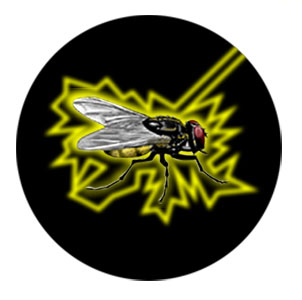
MENU

Fruit Fly
The fruit fly, because of its rapid life cycle, has been used extensively to study mutations which affect the shape of an organism. Evolutionists claim that mutations provide the raw materials for macroevolution to produce entirely new life forms. Evolutionists are compelled to believe, against all evidence, that once in a great while a mutation might occur which is helpful to the organism. For over 100 years scientists have bombarded the fruit fly with radiation in conjunction with careful breeding programs. They have produced many different mutations, but always with negative or harmful results.1 “Thus, the experimental evidence has shown that mutations are harmful losses of coded information. They have never demonstrated a useful addition of coded information in a gene.”2 Dr. Henry Morris summarizes the situation:
As a matter of fact, the phenomenon of a truly beneficial mutation, one which is known to be a mutation and not merely a latent characteristic already present in the genetic material but lacking previous opportunity for expression, and one which is permanently beneficial in the natural environment, has yet to be documented.3
Biologist and author Jonathan Wells points out some of the key points about fruit fly experiments that tend to get left out of the textbooks and public presentations:
Since 1978, the four-winged fruit fly has become increasingly popular in textbooks and public presentations as an icon of evolution. But four-winged fruit flies do not occur spontaneously. They must be carefully bred in the laboratory from three artificially maintained mutant strains. Furthermore, the extra wings lack flight muscles, so the mutant fly is seriously handicapped. Four-winged fruit flies testify to the skill of geneticists, and they help us to understand the role of genes in development, but they provide no evidence that DNA mutations supply the raw materials for morphological evolution.4

[Scientists] have produced
many different mutations, but always with negative or
harmful results.
- Walter T. Brown, Jr., In The Beginning... (Naperville, IL: The Institute for Creation Research Midwest Center, 1981) p. 1.
- Taylor, Paul S. The Illustrated Origins Answer Book (Mesa, Arizona: Films For Christ Association, 1989), p. 31.
- Morris, Henry M., ed. Scientific Creationism. (El Cajon, CA: Master Books, 1985), p. 56.
- Wells, Jonathan. Icons of Evolution. (Washington, DC: Regnery Publishing, Inc., 2000), p. 178.
Design, graphics and artwork copyright © 2016 Tim Beasley • All rights reserved.